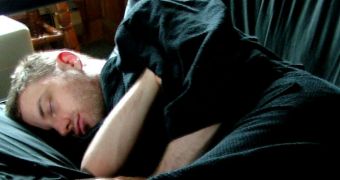In a new investigation, it was revealed that as much as 20 percent of all Americans reported feeling either sleepy or drowsy in meetings or conversations. These are situations that are normally cataloged as necessitating a high degree of attention and focus, but citizens in the Unites States and Canada appear to perform very poorly at this job. The paper also shows that Europeans are far less likely to be sleepy in situations that demand high attention, which means that public health officials in the US should be on the lookout for factors that underlie this trend, LiveScience reports.
Details of the recent investigation were presented yesterday, June 8, at the 24th annual meeting of the Associated Professional Sleep Societies LLC (SLEEP 2010), which is held in San Antonio, Texas. “The prevalence of excessive daytime sleepiness is very high in the American population, much higher than what we observed in the European population. Insufficient sleep is plaguing the American population and is one of the leading factors for excessive daytime sleepiness,” explains Stanford University psychiatry professor Dr Maurice Ohayon, the principal investigator of the research. He also holds an appointment as the director of the Palo Alto, California-based Stanford Sleep Epidemiology Research Center.
“The number of individuals sleepy or drowsy during situations where they should be alert is disturbing. Sleepiness is underestimated in its daily life consequences for the general population, for the shift workers and for the people reducing their amount of sleep for any kind of good reasons. It is always a mistake to curtail your sleep,” the team leader adds. His investigation revealed that the prevalence of sleep-related conditions such excessive daytime sleepiness was about 15 percent in 5 European countries. In the US, the prevalence of those who report moderate to excessive sleepiness during the day is 19.5 percent. Some 11 percent reported severe sleepiness. The condition was more prevalent in women (13 percent).
It was additionally found that the group most at risk of sleeping during the day was that made of people suffering from obstructive sleep apnea (OSA). This is a disease in which the superior airways collapse on themselves during sleep. This leads to temporary episodes in which patients basically suffocate. In the long-run, this contributes to accumulating fatigue, heart problems, brain impairments and so on. OSA patients are about 300 percent more likely than others to fall asleep during the attention-intensive tasks, but their condition can only be diagnosed inside specialized sleep labs. The new work was conducted with funds from the Arrillaga Foundation, the National Institute of Neurological Disorders and Stroke (NINDS) of the National Institutes of Health (NIH), and an educational grant from the pharmaceutical company Cephalon.

 14 DAY TRIAL //
14 DAY TRIAL //